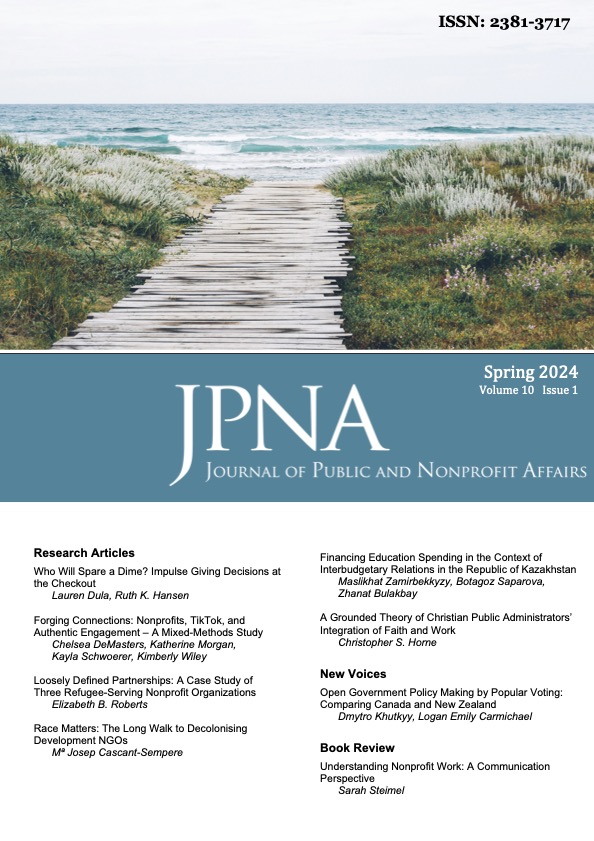Loosely Defined Partnerships: A Case Study of Three Refugee-Serving Nonprofit Organizations
DOI:
https://doi.org/10.20899/jpna.am61dd31Keywords:
Refugees, Partnerships, Resettlement, Nonprofit Organizations, CollaborationAbstract
This article uses a case study approach to explore how U.S.-based nonprofit organizations collaborate to serve immigrants and refugees and identifies characteristics that are essential to successful partnerships. While other studies have documented the challenges immigrants and refugees face in relocating to a new community and the ways community-based organizations help them through the integration process, this project brings together migration studies and nonprofit management studies to interrogate the concept of partnerships based on the lived experiences of organization staff. Partnerships are essential to providing programs and services, and this project seeks to explore the tension inherent in partnering with other organizations that have similar missions and goals. This project captures the stories of three refugee-serving nonprofit organizations in a midsouth city. Utilizing in-depth interviews to analyze the interorganizational collaborations that the three organizations have formed to provide holistic support to immigrants and refugees, the findings here suggest that partnerships are essential but often fraught. These organizations, like many nonprofits, face limited capacity and form community partnerships to alleviate these limitations. As defined by improving an organization’s ability to fulfill its core missions, successful partnerships rely on relational embeddedness and a shared mission. Findings demonstrate the necessity and benefit of a network of partnerships to meet the needs of this unique population.
Downloads
Published
Issue
Section
License
Authors who publish with this journal agree to the following terms:
- Authors retain copyright and grant the journal right of first publication with the work simultaneously licensed under a Creative Commons Attribution License that allows others to share the work with an acknowledgment of the work's authorship and initial publication in this journal.
- Authors are able to enter into separate, additional, contractual arrangements for the non-exclusive distribution of the journal's published version of the work (e.g., post it to an institutional repository or publish it in a book), with an acknowledgment of its initial publication in this journal.
- Authors are permitted and encouraged to post their work online (e.g., in institutional repositories or on their website) prior to and during the submission process, as it can lead to productive exchanges, as well as earlier and greater citation of published work (see, The Effect of Open Access).







